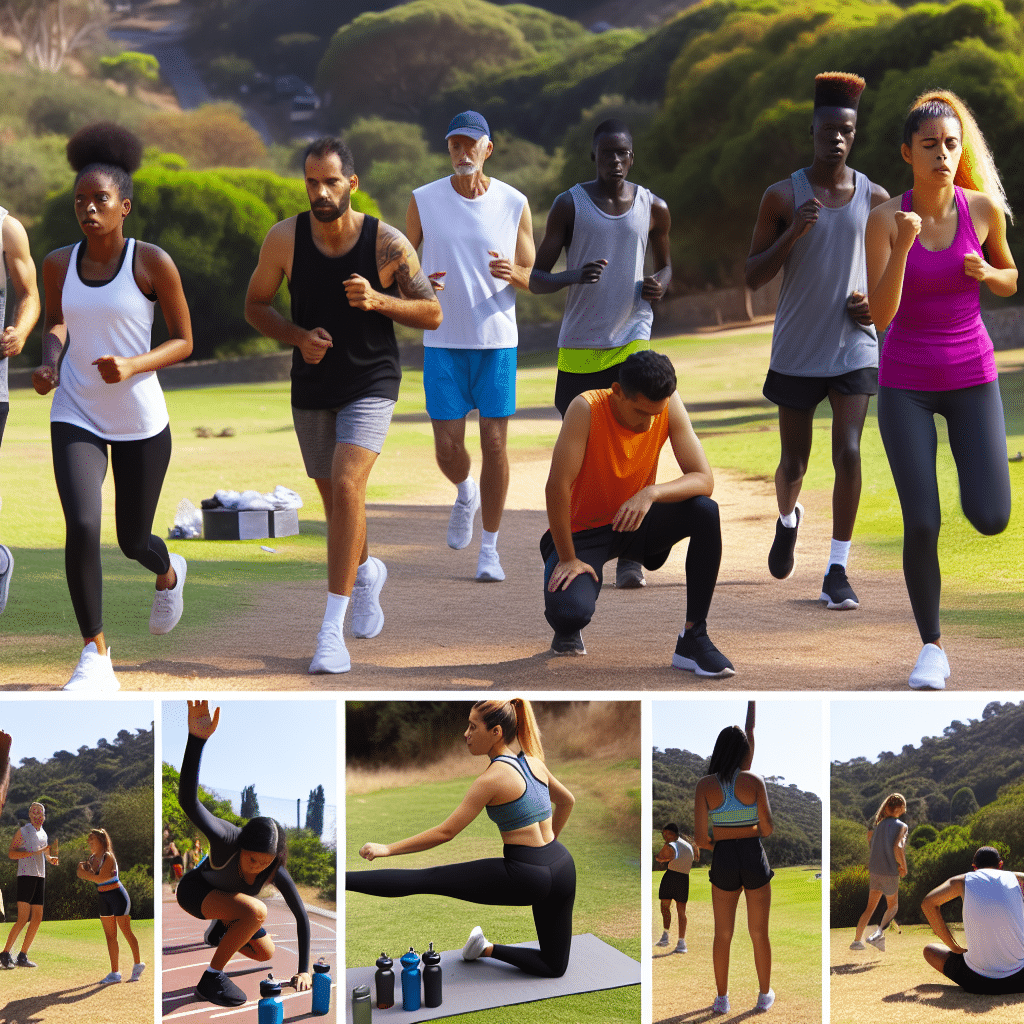Running is a great way to burn calories and help you lose weight.

In fact, running for weight loss burns about 100 calories per mile. And site uweightlossreviews says that this equates to about 10 pounds lost every seven months (if you run 5 miles a day).
This article explains how running can help you shed unwanted pounds.
Running cntributes to better overall health. This includes improvements in blood cholesterol, triglycerides, and triglyceride levels, which are all linked to lower risk of heart disease.
Running also reduces inflammation throughout the body and may even boost brain power by increasing blood flow and oxygen delivery to the brain (provided you take breaks for your heart rate to come down).
Running for weight loss is an extremely effective way to burn calories and shed the pounds.
Running is very efficient at burning fat because it’s a high-impact form of exercise, so you work up a sweat really quickly. This means that running helps your body use its energy more efficiently, which means that fewer fat stores are needed.
The faster you go, the more calories you burn in a given period of time. However, running at high intensities can be tough if you’re not used to it, so don’t try to run too fast when you first start out. Start with a pace that feels comfortable and gradually increase your speed as you go along.
Running also boosts your metabolism, so you burn more calories throughout the day even when you’re not working out. Plus, it improves your posture and strengthens muscles in the lower body (which helps prevent injury and improve balance).
Running can also help improve your endurance and speed, which is great for all kinds of other forms of exercise as well as making day-to-day tasks easier to manage. Plus it’s a fantastic way to release stress and frustration, knowing that you’ll be fitter and healthier in a few months time.
Running can be a great way to shed unwanted pounds. However, it is important not to overdo it when you’re just starting out because this could lead to injury. You should also consider wearing appropriate running clothes for your body type and weather conditions, as well as the correct shoes that will support your feet properly. Also remember to stretch properly after every run.
Running is also better for weight loss than walking because it requires more energy (which means using up your stored fat). And while running may seem like an intensive exercise, new research suggests that you can still lose weight by simply walking faster; if you want to tone up this way, check out our article on how walking can help you lose weight.
Running is also one of the best forms of exercise to build endurance, so it’s a great idea if you already have other fitness routines in place, such as walking or cycling.
Can I lose weight by running 30 minutes a day?
Running will burn calories. However, depending on your weight and gender, you may need to run for about an hour a day to notice any significant weight loss. This is because it takes longer than 30 minutes for the energy from food to be absorbed by your body as fuel, which means that your energy levels can’t immediately be replenished by food.
Once your body is no longer dependent on the energy it gets from food, you’ll find that eating becomes less of a priority in day-to-day life because you won’t need to eat as much in order to keep your energy levels up all the time.
How should I run to lose weight?
When running, try to pick up the pace so that you’re breathing harder but can still maintain a conversation. This will mean that you’re working your muscles more intensely and burning off energy faster than when walking or jogging.
If you already have other fitness routines in place, such as walking or cycling, running is a great addition to your workout because it will help you burn more fat.
Running is also better for weight loss than walking because it requires more energy (which means using up your stored fat). And while running may seem like an intensive exercise, new research suggests that you can still lose weight by simply walking faster.
how do I start running?
If you feel comfortable jogging at your current weight, try starting with 1km run/1km walk intervals until you can run continuously for at least 30 minutes. If this is too much, begin by walking instead of running.
Remember that you should always feel like you can keep going without having to stop. You may need to work up to the point where you can run for an hour, but eventually it will become very easy for you.
Once you’re able to run continuously for 30 minutes, aim to increase your speed until you can complete 5km (3 miles) in that time without needing a break.
This doesn’t mean that every time you run you should try and complete this distance; mix it up with 1km runs, 3km runs and 5km runs so your body gets used to different distances.
As you become fitter, increase the distance that you run (without increasing the time it takes), or try running for longer without stopping.
Adding interval training to your exercise routine can also help increase your endurance levels by bringing quick results.
Running helps you tone up
Another great reason to run is because it can help you tone your muscles and lose weight all over, rather than in one particular area of the body.
To get started with interval training, try running for 30 seconds fast then recovering by walking or jogging for 30 seconds until you’re ready to run again.
This can be repeated any number of times, but aim for at least 5 repetitions to get the most out of your workout.
For interval training plans that are more intensive than this, check out our article on how walking can help you lose weight.
Running will burn calories, but depending on your weight and gender, you may notice significant weight loss by running for about an hour a day.
Running is also better for weight loss than walking because it requires more energy (which means using up your stored fat). And while running may seem like an intensive exercise, new research suggests that you can still lose weight by simply walking faster.
Once you’re able to run continuously for 30 minutes, aim to increase your speed until you can complete 5km (3 miles) in that time without needing a break.
This doesn’t mean that every time you run you should try and complete this distance; mix it up with 1km runs, 3km runs and 5km runs so your body gets used to different distances.
As you become fitter, increase the distance that you run (without increasing the time it takes), or try running for longer without stopping.
Adding interval training to your exercise routine can also help increase your endurance levels by bringing quick results.
How much should I run a week to lose weight?
Short, intense workouts burn more calories than longer stints at a slower speed.
The American Council on Exercise recommends running 1-2 miles four or five times each week to lose weight.
Running is also better for weight loss than walking because it requires more energy (which means using up your stored fat). And while running may seem like an intensive exercise, new research suggests that you can still lose weight by simply walking faster.
Once you’re able to run continuously for 30 minutes, aim to increase your speed until you can complete 5km (3 miles) in that time without needing a break.
This doesn’t mean that every time you run you should try and complete this distance; mix it up with 1km runs, 3km runs and 5km runs so your body gets used to different distances.
As you become fitter, increase the distance that you run (without increasing the time it takes), or try running for longer without stopping.
Adding interval training to your exercise routine can also help increase your endurance levels by bringing quick results.
So that’s why running is great for weight loss, now let’s look at how it works.
Let’s find out more about how running actually helps you lose weight.
Why does running help me lose weight?
Running burns calories and increases your fitness levels.
During a run (especially at faster speeds), the body uses up its stored carbohydrate (glycogen) for energy.
At high intensities, when you’re near-exhausted, your body will then start using fat as an energy source instead to help you finish your run.
How quickly will I see weight loss results from running?
As mentioned above, the amount of time you need to complete a run will depend on whether you’re running at a fast or slow pace.
Running 5km in one go will burn more calories than doing several 1km runs, but either activity can help you lose weight if combined with a healthy diet.
Studies have shown that people who complete in excess of this distance (and do so regularly) generally lose more weight than those who don’t.
How long will it take me to run 5km?
This is one of the most common questions when it comes to running and weight loss, and the answer depends on your experience level and fitness levels.
If you’ve been inactive for a long time and attempt to run 5km without doing any proper training, it’ll take you much longer than if you’re an experienced runner.
For most beginners, it takes about an hour or more to complete 5km, but there are some who may be able to run it in less than 40 minutes.
Running 5km burns around 500-800 calories (depending on your weight, the speed at which you run and other factors).
This sounds like a lot but remember that this is an all-in figure; taking into account preparation time and rest days, it’ll take much longer to burn this many calories.
Start off by running 1km at a time, allowing yourself plenty of rest between each run.
Gradually build this up to 3 or 5km until you’re able to put in longer distances without stopping.
If you feel like you can manage more, try completing 2-3 runs of 5km each week.
What are other benefits I’ll receive from running to lose weight?
Running helps strengthen your muscles, improve your coordination, increase stamina and encourage better posture.
It can also help boost metabolism levels giving you more energy for daily tasks.
However, the main benefit of running is shedding excess fat which will have a huge impact on your life.
The more weight you lose, the fitter and healthier you’ll be – all of which leads to a better quality of life.
Running also helps sharpen your mind and can help ease stress levels after a long day at work or college/university.
It’s a great way to unwind and escape from the pressures of everyday life.
Combining running with a healthy diet will have even more benefits, helping you burn fat faster so you can see results. It’ll also keep your weight loss journey interesting as you experiment with different foods and exercises.
As we can see, running to lose weight is a great way to boost your fitness levels and shed unwanted weight.
After a while, you’ll begin to notice real changes in your body and it’ll become second nature.
Running regularly will make you feel much better about yourself and help you achieve long term health goals.
So there we have it: running is one of the best ways to lose weight fast.
It’s beneficial for both your physical and mental health, helping you lead a better life.
Will I lose belly fat by running?
If you’re keen to lose belly fat in particular, running is a great option.
One of the most common misconceptions about weight loss is that it only influences ‘fat’ mass in your body.
However, losing weight can also lead to fat-free mass (muscles) which means you’ll have much firmer muscles than before.
Building strong, leaner leg and arm muscles is also beneficial for your posture which can help reduce back pain in the long term.
Running will help you develop much leaner legs and arms by building up calorie-burning muscle mass.
This is especially ideal if you don’t want to do any resistance training in the gym.
Another benefit of running is its fast-paced nature, which helps release a number of mood-enhancing hormones.
Cortisol levels will be lowered and you’ll feel less stressed which will help your body recover from day-to-day life much faster.
Losing weight can also be a great way to improve confidence levels, which helps you go about your life with more purpose.
All of the above are just some of running’s other benefits that you can enjoy after shedding excess pounds.
But remember that this journey isn’t easy and takes time to see results.
If you stick to it though, you’ll notice a real difference in how you feel, look and move.
Can running alone reduce belly fat?
No, running alone cannot reduce belly fat.
However, to lose weight you need to burn more calories than you consume – so your body can use up its excess supply from elsewhere.
Running regularly will definitely help you lose weight and improve your health in many other ways as well. It’ll also improve cardiovascular function which means that your heart, blood pressure and lung function will all be greatly improved.
What you eat is another important factor in losing weight of course.
To lose weight with running, you’ll need to burn off more calories than you consume so your body can use up its excess supply from elsewhere. This essentially means eating a healthy diet, avoiding junk food and focusing on nutritious, high protein foods.
You should also drink plenty of water to keep yourself well hydrated throughout your weight loss journey.
What happens if you run everyday?
There’s no specific limit on how many days a week you should run.
If you want to get the best results, doing lower-volume bouts of running (such as one or two sessions) will help improve your fitness levels much faster.
However, there’s also no reason why you shouldn’t run every day if that’s what you enjoy.
Lower-volume running is ideal for beginners who want to lose weight and build up a solid level of fitness.
However, more experienced runners can get great health benefits from running every day as well provided they take care of their training.
Is it OK to jog everyday?
First off, let’s consider what ‘jogging’ actually entails.
You should know that jogging and running are not the same thing – so if you’re a jogger, don’t worry!
Jogging is essentially an easy-paced run where your heart rate is usually around 100-150BPM.
Jogging is a great way to keep fit and lose weight, but you need to run at a lower intensity than when doing sprints or long-distance runs.
This means that it’s not going to burn as many calories for the same amount of time running.
You should try jogging around 3-4 times a week for at least 30 minutes each time.
You might also want to consider adding some hills into your route, as this will help you burn extra calories and tone up all major lower-body muscles at the same time – although make sure you stretch properly before and after!
How do you run with knee pain?
Running with knee pain can be tough to deal with, especially if you’re not sure what the problem is.
Following these steps will help you run more comfortably and identify problems that might need some medical attention.
1) Start by warming-up before your running session.
This helps reduce joint stiffness which reduces unnecessary stress on your knees.
Try to add some warm-up jogging before your run, and always make sure you take a warm-down too after you’ve finished running.
2) Vary the terrain you run on from time to time.
Running on different surfaces stimulates different muscle groups which is beneficial for healthy joint function. It also helps to avoid overuse injuries by varying your workout.
3) Keep a check on how many miles you’re running each week.
If you’re increasing the volume of your training, this will increase the amount of pressure put through your knees – so make sure you give yourself adequate rest between sessions. You should also focus on proper running form to maximize your efficiency and reduce unnecessary impact.
4) Make sure you’re wearing the right shoes for your feet type.
Running with ill-fitting footwear can lead to knee pain, so it’s important that you have suitable shoes for your foot structure. Make sure they fit comfortably but also provide the necessary support to avoid injury.
5) Stretch your hamstrings and hip flexors after every run.
This will help release any built-up muscle tension which can lead to poor running form and cause unnecessary weight-bearing through your knees.
6) Make sure you’re wearing appropriate socks for your running shoes.
Choose shoes that provide adequate cushioning and shock absorption to reduce unwanted impact.
If you’re still struggling with knee pain, don’t let it ruin your running routine. You can find advice on how to prevent most common running injuries here.



